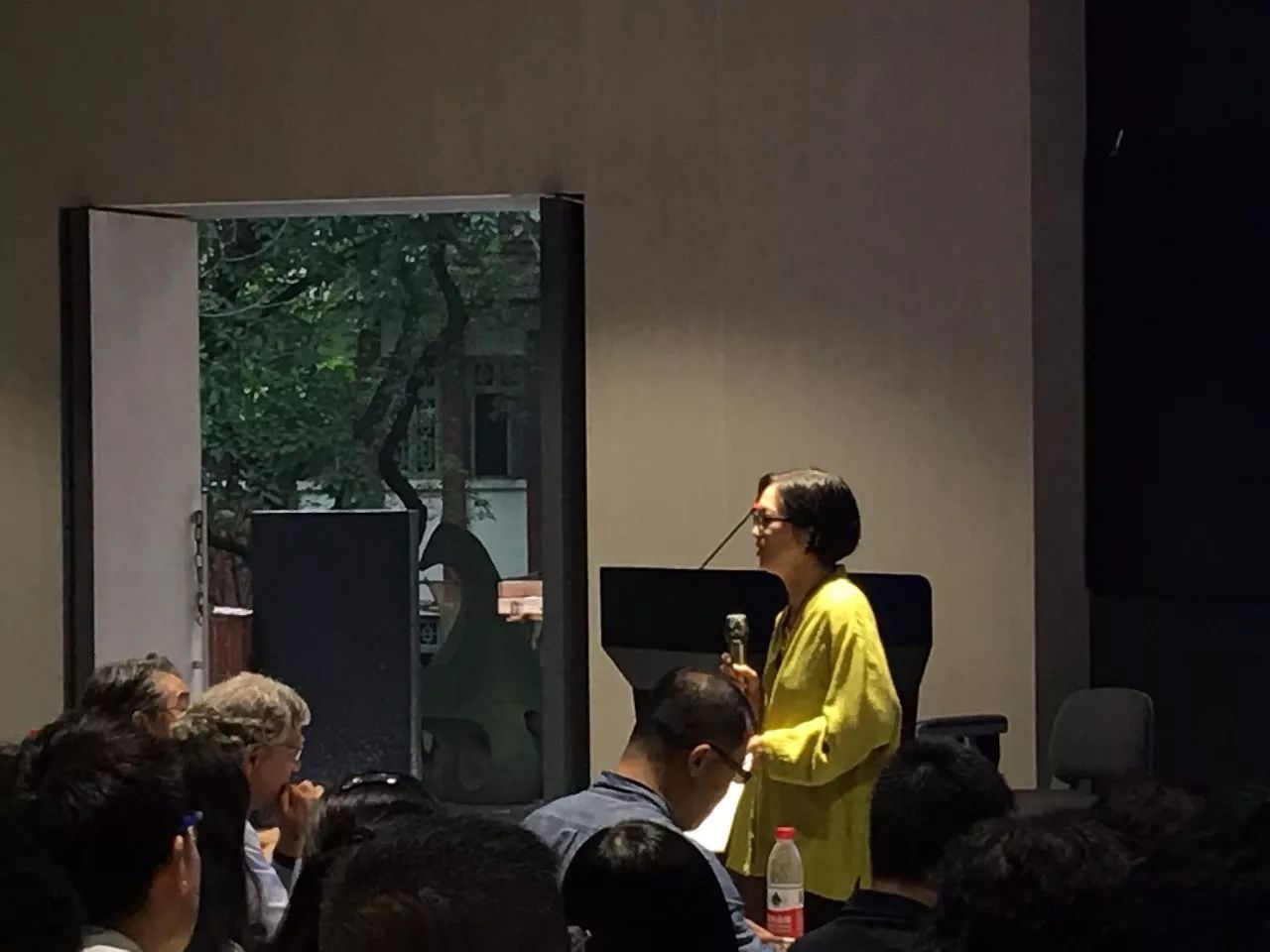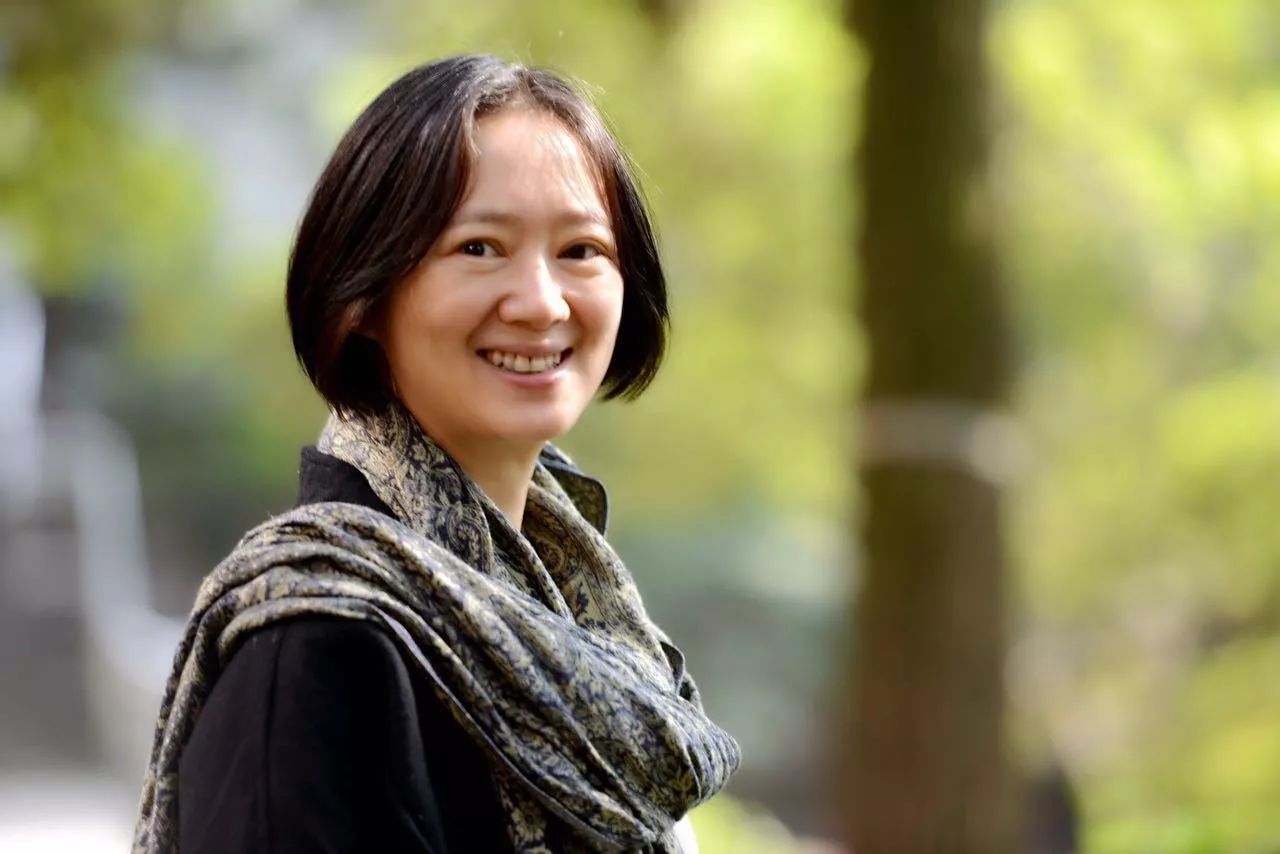
As a special guest, Professor Chen Chaohui, after listening to the rich and exciting lectures from four experts of SOM and engaging in in-depth discussions, couldn’t hide her excitement and sent her “reflections” to our media center. This is shared as a perspective for a deeper understanding of the SOM lecture.
What to Learn from SOM?
After going through an introduction to Bauhaus, the mysteries of mathematics, general physics in university, and anecdotes from Feynman, I tried to ponder this question.
SOM is pragmatic, with the genes of Bauhaus. At SOM, every profession is guided by the service to the whole, “All for One, One for All”; the former “one” is architecture and its functions, and the latter “one” is each profession. Buildings are an organic whole with multiple functions and elements, not a mechanical assembly or simple superposition. This concept is consistently integrated from conceptual design to physical presentation at SOM. Architectural space, structure, equipment, and technology all serve the architectural function, striving for holistic solutions.
Since Gropius established Bauhaus, he advocated for the spirit of craftsmanship. Craftsmen aim for functionality, solutions, and realization, seeking perfection. Student assignments are not merely to be drawn or spoken about, but to be made, which means controlling the overall process from concepts, materials, production to the final product, integrating form (art), craftsmanship (technology), and function (practicality) at a high level.
Crafters seek solutions to problems, pursuing the pinnacle of art in the resolution. The individuality of problems and needs fosters creativity, which is an objective necessity. This is different from artists, who prioritize posture and style, driven by novelty.
SOM’s designs revolve around the conditions and functions of “this one” project, but they are not led by the project. They grasp the demands of the times, understand the essence of structures, track technological achievements, and their team’s action and innovation enable them to be prepared for each case, standing at the forefront.
SOM demonstrates the possibility of “Structure as Architecture, Architecture as Structure” (the symbiosis of architecture and structure). In fact, it goes beyond this, including the potential for architecture and structure as a whole to meet all demands such as vertical community, environmental adaptation, and low energy consumption. These demonstrations of possibilities are not conveyed through concepts, PPTs, or texts, but through completed physical structures.
SOM’s innovations in structural systems are unparalleled. They inherited the design philosophy of “efficient overall collaboration” and the unwavering aesthetic of structure from Fazlur Khan—SOM’s legend, the father of modern high-rise tubular structures, and one of the greatest structural engineers of the 20th century, which states, “to create a true structural facade, rather than obscure the structure with a priori architectural concepts” (The Legacy and Inspiration of Eiffel and Khan—From the Eiffel Tower to Shanghai Tower, Architect, 2014 Issue 4). Their creations are abundant and continuous. This stems from their grasp of material properties, building technologies, and analytical methods, but fundamentally, it arises from their constant examination and exploration of structural system concepts, and their application has never deviated from architecture—this spatial theme—acting independently; SOM is marked by tracking high technology and applying it, not for the sake of show. Behind a series of dazzling high-tech terms and technologies such as self-consistency, zero energy consumption, high-altitude wind power generation, energy piles, digital design, cloud computing, topology optimization, 3D printing, and prefabricated construction, lies the careful evaluation, analysis, system design, manufacturing, and craftsmanship of engineers and craftsmen.
SOM’s series of high-rise building structures showcase the technological vocabulary and structural vocabulary in architecture, endowing high-rise buildings with elegance through rationality and restraint. Could this be SOM’s contribution to the modern high-rise architectural vocabulary?
Leo Chow, a design partner at SOM, humorously remarked: SOM has no style. Because SOM is not designed by a single architect; they have been a team from the very beginning.
What an exquisite and forward-thinking team this is! When we start talking about how structure achieves architecture, SOM’s starting point is mutual growth and symbiosis! The goal is engineering perfection. The style-less SOM, with a large number of unique constructions that occupy the list of iconic high-rise buildings worldwide, is distinctive without repetition or self-copying. SOM does not talk about sentiment, yet it genuinely aims to meet each project’s functionality, low energy consumption, and comfort, guiding practice with architectural ideals, and achieving ideals through understanding and respecting reality.
The style-less SOM often reminds me of Schubert’s music, vibrant and rich in color, with the unique restraint of the German-Austrian musical school and the warmth of the Vienna Woods.
SOM tells us that structural engineers should think like architects, that structure serves human use and the construction of space; structural engineers should think like scientists, touching the essence of materials and structures rather than binding themselves with norms and conventions; structural engineers should also think like clients, as controlling costs is not a low-grade matter; and structural engineers need to pursue creativity and details like artists.
When domestic architects frequently complain that their “exquisite designs” encounter structural obstacles of “conservatism” and “obstinacy”, and are denied by clients who are “profit-driven” and “short-sighted”, have they considered whether, amidst the talk of sentiment, they could provide more persuasive evidence? Have they become too detached from the development of contemporary science and technology, leaving them at a loss during construction? In today’s China, as architects chase the world, while paying attention to the passive cooperation of other high-quality professionals, should they focus more on themselves, whether they are willing to and truly understand other professions, and whether they possess the desire and ability to elevate architecture as a whole from the very beginning to foster common thinking, dialogue, and creative patterns? The solitary pursuit of architects, often leads to getting out of touch with the needs and sensuality of mankind (by Bernard Rudofsky, 1964). Powerful and insightful clients in China frequently spend huge sums to invite foreign experts, not merely because they are “rich and foolish”.
SOM’s penetration into architectural and structural design education unexpectedly resonates with me, and also brings a sense of awe that is hard to match! The studio in cooperation with North Carolina focuses not on “teaching” design but on showing the design process. SOM’s structural engineers and architects demonstrate how a proposal takes shape through interaction, inducing students from the architecture and structural disciplines to collaboratively develop and refine proposals. This may become my final destination in the past decade of reform and practice in architectural structural system education at the architectural academy (initially thought to be a brief foray, yet it turned out to be increasingly deep, hence termed a “quagmire”).
In the past two weeks of the semester, the elective course “Structural Concept”, the dual-directional progressive optimization academic report, and the SOM lecture series have provided neurons with a series of intense stimuli, with concepts, methods, and results mutually corroborating and supplementing, proposing new points of reflection and focus for the next steps in structural mechanics and architectural structures teaching.
Of course, after a series of stimuli, there is also a faint concern. While the nation discusses double first-class universities and 42 universities are making rapid progress, aspiring to enter the ranks of world-class, amidst the frenzy of using SCI and large projects as the guiding principles for university development and talent cultivation, should we still cultivate, and how to cultivate “high-quality” engineering technicians? Especially in the field of civil engineering!
Professor Chen Chaohui’s Personal Introduction
Professor Chen Chaohui, Ph.D. in Engineering, is a professor at the School of Civil Engineering, Chongqing University, Director of the Institute of Architectural Mechanics, and concurrently serves as a member of the Structural Reliability Committee and the Random Vibration Committee of the Chinese Society of Civil Engineering, as well as a director of the Chongqing Mechanics Society. His research mainly focuses on structural nonlinear analysis, engineering structure reliability and durability analysis, and urban infrastructure risk analysis. In recent years, he has concentrated on the teaching reform and exploratory practice of architectural mechanics and architectural structures for architecture majors, striving to build a bridge between architectural function, form, and structural logic and systems. The textbook he edited, “Architectural Mechanics and Structural Selection”, has been included in the Ministry of Housing and Urban-Rural Development’s 13th Five-Year Plan for textbook compilation, and he has published a series of related teaching papers such as “The Legacy and Inspiration of Eiffel and Khan—From the Eiffel Tower to Shanghai Tower”, “The Desire to Become a Combination of Cables and Arches – Beams”, “Breaking Out of the Dilemma of Architectural Structure Education—Reconstructing the Course System of Architectural Structures for Architecture Majors”, and “Is It Necessary? – A Question on the ‘Art of Structure in Architecture’.

Professor Chen Chaohui providing feedback at the lecture site

Mr. Sarkisian presents a book to Professor Chen Chaohui
The Heights of SOM丨The SOM Architectural Design Firm’s High-Rise Building Design Lecture was successfully held recently at the School of Architecture and Urban Planning, Chongqing University. Please follow this public account for the lecture transcript and click on today’s other post.

Welcome to follow the official WeChat account of the School of Architecture and Urban Planning, Chongqing University
Submission Email[email protected]

